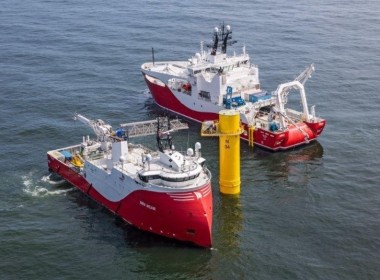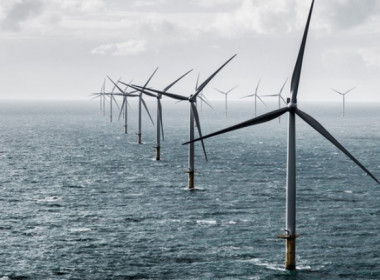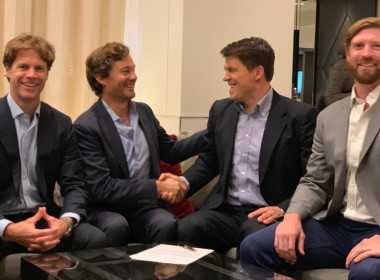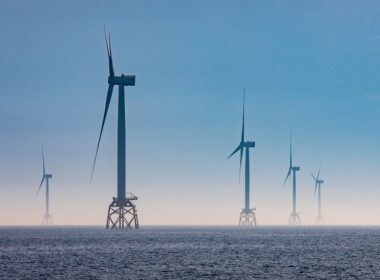COLUMN | Nothing’s right, I’m torn: Saipem and Sapura face a Natalie Imbruglia moment in offshore wind, as Siemens Gamesa fires its CEO! [Offshore Accounts]

“Illusion never changed into something real,” warbled Australian pop star Natalie Imbruglia in her 1998 global smash hit Torn, a song that catalogues her broken heart.
It seems a strangely appropriate sentiment for the contemporary wind installation industry, where we saw last week how the western turbine makers are struggling with rising costs, and face a grim 2022 following profit warnings from both Vestas and Siemens Gamesa (here).
Now Malaysia’s Sapura Energy has cancelled a loss-making contract in Taiwan, and Italy’s Saipem has issued a massive profit warning following a disastrously implemented campaign to install wind turbines off Scotland.
Siemens Gamesa bins CEO and loses US$455 million in three months
First, an update on how things went from bad to worse at Siemens Gamesa last week. The company’s beleaguered CEO Andreas Nauen announced his resignation (here) following a catastrophic set of results issued on Thursday. The company reported a net loss of €403 million (US$455 million) for the most recent quarter, as revenue for the three months to December 31 tumbled 20 per cent to around US$2 billion.
“I’m disappointed about this outcome,” Nauen told Bloomberg. Was he torn, perhaps?
“I have to admit the results are clearly not where they should be and I fully understand the board had to take this decision.”
The new Siemens Gamesa CEO is great…
The company announced that Jochen Eickholt, an executive board member from Siemens Gamesa’s parent company Siemens Energy, will replace Herr Nauen as CEO on March 1. Siemens Energy, which owns 67 per cent of Siemens Gamesa, promptly set about painting a rosy image of Herr Eickholt to give the impression that he has a track record of restructuring struggling businesses and can fix the issues that have plagued Siemens Gamesa.
“[Eickholt]’s proven ability to turn around underperforming businesses and his vast leadership experience will be key elements to successfully implement the necessary changes and improvements at Siemens Gamesa,” commented Siemens Energy’s Chairman Joe Kaeser in a statement (here).
…but this is irrelevant
We, however, disagree with Mr Kaeser.
“When a management with a reputation for brilliance tackles a business with a reputation for bad economics,” Warren Buffet famously said, “it is the reputation of the business that remains intact.”
The European wind turbine makers face inexorable pressure from China. Mr Eickholt will struggle to overcome the hit from high commodity prices and pricing pressure from the People’s Republic in 2022 and 2023.
I give him three years at most before he’s out of the executive door, and Siemens Energy has either taken Siemens Gamesa private, or has merged it with another player, probably GE Renewables.
GE Renewables bleeds too
GE Renewables, the third big western offshore turbine maker reported, as a business unit within General Electric, a loss (here) for the fourth quarter of US$312 million, a total loss for 2021 of US$795 million, and negative free cash flow of US$1.4 billion. The wind turbine manufacturing problems are clearly not company specific.
Look at the industry structure, not the personalities
Wind turbine manufacture is an industry that is structurally challenged. It is perfectly possible for entire sectors to grow and burn shareholder’s money. Consider the case of American aviation, if you don’t believe me.
Within the US, domestic passenger airline operations lost US$10 billion from 1979 to 1989, made profits of US$5 billion in the 1990s, and then lost a staggering US$54 billion from 2000 to 2009, according to Severin Borenstein of NBER (here). During the period from 1979 to 2001, the U.S. airline passenger fleet grew in every year, by an average of 4.9 per cent per year measured by aircraft numbers, and 3.6 per cent per year measured by seat capacity, he found.
Businesses can boom in volume terms, and everyone can still lose money. Never forget that.
Will offshore wind be the same? Time will tell, but I guess the fortune teller’s right. Siemens, Vestas and GE should have seen just what was there, and not some holy light (to quote Ms Imbruglia again).
Nothing’s right: Sapura Energy quits Taiwan project
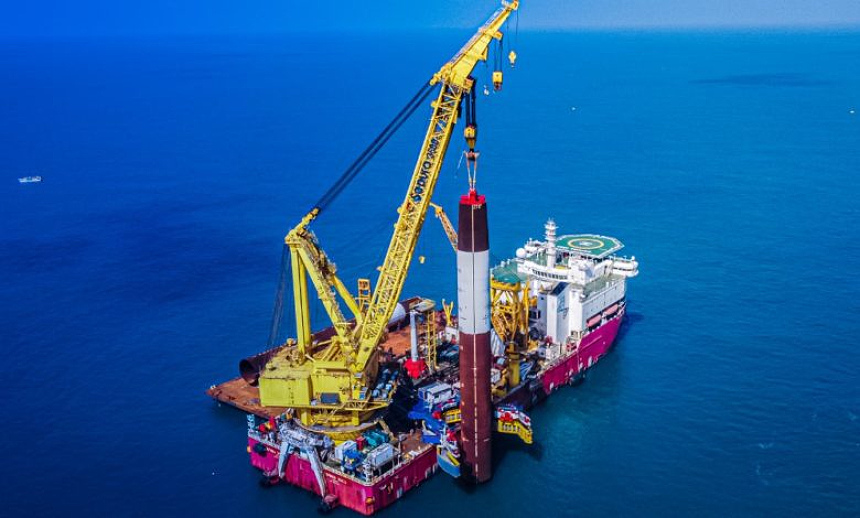
Walking away from a contract is never easy, and is never a decision taken lightly.
Last Friday, Malaysia’s Sapura Energy announced (here) that it had decided to withdraw from the Yunlin offshore wind farm installation project in Taiwan following what it described as an unspecified but “material breach of contract” by its client, Yunneng Wind Power.
Upstream has reported that Yunneng Wind Power is jointly owned by Germany’s WPD and Thailand’s Electricity Generating Public Company (EGCO) with each one holding 25 per cent stakes, TotalEnergies holding 23 per cent, and a consortium of Japanese investors holding the balance.
The Malaysian oil and gas player said it has issued a notice to Yunneng Wind Power to terminate the contract for the transportation and installation of monopiles at the Yunlin wind farm.
Sapura talked to its lawyers, contract torn up
Sapura said that it had an immediate right to legally and contractually terminate the contract, following advice from external international lawyers. The contract to transport and install foundations for the 640MW Yunlin offshore wind farm was awarded to Sapura Energy’s wholly owned subsidiary, Sapura Offshore, in March 2019, and, according to Sapura, the Yunneng project should have been completed in September 2020.
Unfortunately, technical and operational issues, which Sapura Energy says were certainly outside its control and were most definitely not its fault, had pushed the completion back to September 2023, a little late. Faced with bleeding cash or walking, Sapura chose to walk, or rather stagger away.
All out of faith – other options exhausted for cash-strapped Sapura
“Negotiations with Yunneng to remedy the breach began in November last year,” Sapura Energy CEO Datuk Anuar Taib said in the statement, describing how conversation had run dry with its client. “Since we exhausted all avenues for an amicable solution, we made the tough decision to terminate the contract in the best interest of the group.”
Datuk Anuar is touted as a turnaround specialist and after a long career at Shell Malaysia, he went to try to sort out the state oil company Petronas’ upstream division before moving to tackle the serious debt problems faced by Sapura.
In December last year, Sapura had reported a loss of US$160 million for the most recent quarter ending October 31, blaming higher Covid expenses and “certain projects” for higher costs. It has consistently lost money since 2017 with huge impairments and a capital raising, as we highlighted in 2018 (here). In the preceding quarter ending in September, it lost over US$350 million.
It is now clear that operational problems off Taiwan and Taiwan’s strict Covid policies likely led to Sapura deciding to walk away from this certain project with Yunneng. Sapura is now seeking redress at the German Institution of Arbitration in Bremen, which is conveniently the location of Yunneng shareholder WPD’s head office.
Perhaps inspired by the news that Sapura might not lose any more money at Yunlin, shares in the company closed 10 per cent higher at 5.5 sen on the Kuala Lumpur exchange last Friday, giving Sapura a market value of just MYR879 million (US$210 million).
History of poor leadership and high debt leaves Sapura exposed
Therein lies the problem. Whilst Sapura is worth less than a single drillship, it labours under the burden of US$2 billion of net debt, according to The Edge (the Malaysian business journal, not the Irish guitarist of the same name from U2).
Shahril’s large ego had a heavy price for shareholders
Sapura’s history was one of hubris and over-expansion, with founder and former CEO Tan Sri Shahril Shamsuddin making bad decision after bad decision during his 18 years running the group and its predecessor.
Tan Sri Shahril was finally ditched and replaced by Datuk Anuar in March 2021, having consistently paid himself US$17 million or more per year, even as his company teetered on the brink of insolvency. He masterminded the buy-out of 16 tender rigs from Seadrill in 2014 for the princely sum of US$2.9 billion (here), the single worst deal that carried Sapura on the path to catastrophe.
Shahril seems to have spent much of the boom years flying around in a private jet – according to sources in Malaysia – and living the high life. In 2020, Sapura was busy denying (here) any bribery or corruption in Brazil, where the company’s flex-lay subsidiary with Seadrill joint venture was (and still may be) under investigation over Petrobras contract awards.
Now with its huge debts coming due, Sapura has very little leeway to lose the arbitration in Germany. It’s ironic that a company that was founded on offshore construction and latterly offshore drilling, and that owns SapuraOMV, producing 34,000 barrels of oil equivalent (from the Newfield assets Sharil purchased for nearly US$900 million in 2014), should be laid low by a windfarm installation project.
Saipem is cold and shamed?
At one point, Sapura Energy was the world’s second most highly valued offshore construction contractor, with a market capitalisation of over US$8 billion, second only to Italy’s Saipem.
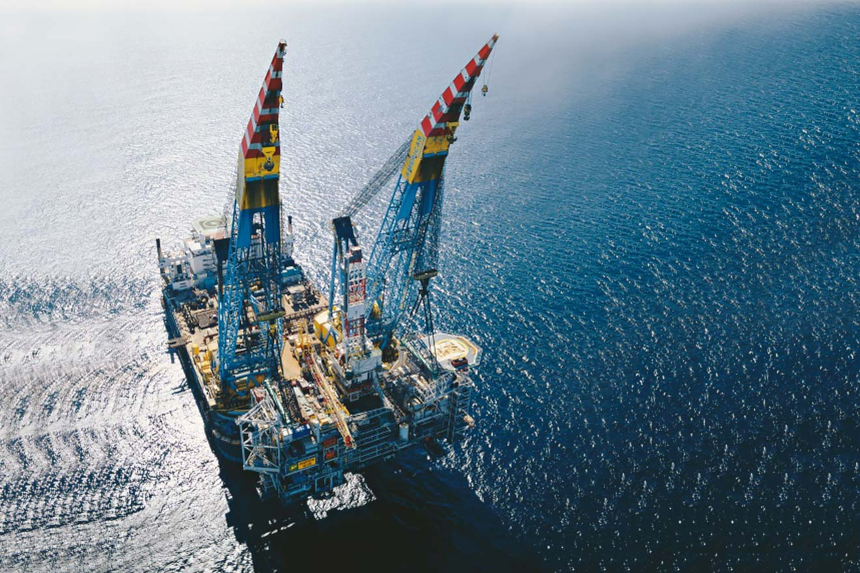
Like Sapura, Saipem is a diversified services player, specialising in offshore construction, pipelay, drilling, and even FPSO operations. Also like Sapura, Saipem has discovered that windfarm installation is not as easy as it seemed when the company started signing turbine installation contracts.
A year ago, Upstream (here) had found that the company faced issues at the Neart na Gaoithe wind farm off Scotland for EDF Renewables, which Saipem linked to soil problems and issues with the foundations of the 54 turbine jackets it was fabricating and installing for the wind farm, along with the jackets for two substation platforms. Saipem was using its Saipem 7000 crane vessel for the installations.
Like Sapura, it had reported to analysts that it faced “slow progress on a project in the North Sea” in the offshore renewables sector, which “outweighed positive developments”.
Now Saipem said last week (here) that it faces a hit of more than US$1 billion to its earnings for the second half of 2021, due to an increase in costs for materials and logistics for its onshore projects, and “recent further difficulties in offshore wind projects, for which impacts from delays in critical supplies are combined with revised estimates of execution times and costs.”
Saipem warned investors that it faced losses “in excess of one-third of company’s equity, which trigger the application of Article 2446 of the Italian Civil Code… Saipem has also initiated preliminary discussions with the shareholders exercising joint control over the Company, ENI and CDP Industria, in order to ascertain also their willingness to support an appropriate and timely financing package.”
Together, the two Italian government entities own 43 per cent of Saipem.
“The occurrence of such conditions may, following the expiry of the contractual terms (where applicable), and in the absence of a specific waiver from the banks, give rise to the right of the banks to accelerate the repayment of certain outstanding loans to the Saipem group,” the company’s statement added.
Ciao, ciao, Mr Caio?
Ouch. A few days later, Italian state oil company and Saipem’s largest customer ENI announced it was parachuting in a new general manager for Saipem (here). Alessandro Puliti was most recently general manager of the Natural Resources Division at ENI, Saipem said. He will start his new role in Saipem on February 7. Saipem’s CEO Francesco Caio must be feeling uncomfortable.
Saipem’s corporate value statement states that “extraordinary is our choice,” which seems unfortunate, given that the company now faces hundreds of millions of dollars of extraordinary charges, and shareholders may have to contribute to an extraordinary capital raising exercise.
Saipem’s market value shrank by more than US$140 million last Monday, extending a protracted sell-off that has taken the share price 98 per cent down from its peak a decade ago.
Reuters reported (here) that Saipem may seek to raise more than €1 billion (US$1.12 billion) in cash by selling new shares, and raising new funding of around the same amount to roll over debt maturities.
Saipem’s foray into wind has proven far more expensive and damaging to the company than proponents of the green economy might ever have imagined.
Let’s see what Seaway 7 reports
Is wind farm installation going the way of wind farm manufacture and becoming a money pit? Or were Sapura and Saipem simply using the wrong equipment at the wrong time on the wrong contracts? Is this a problem of bad luck, or a more structural issue?
The critical date to test the hypothesis will be February 25, when Subsea 7’s pureplay wind installation subsidiary Seaway 7 reports its results. We’ll be keeping a close look-out.
Hope spring eternal
But like all stories of compounded growth for years on end, offshore wind holds an allure, and in the world’s capital of shipping speculation, Oslo, the frenzy around offshore wind continues unabated. Recent developments include:
- Fred Olsen Windcarrier announcing an IPO to list its shares in Oslo. The company said that the IPO is expected to raise gross proceeds of over US$165 million, which will be used to fully finance the equity portion for a newbuilding wind turbine installation vessel (WTIV) that the company aims to build. Parent Bonheur says it is committed to remain a long-term shareholder in the business. This means that there will now be a third pureplay WTIV operator listed on public markets after Eneti and Cadeler, which have both raised capital from the public and used to proceeds to pay for newbuildings in China, as we have reported previously (here). Eneti has subsequently announced it will not be pursuing building a Jones Act-compliant WTIV in the USA. There are reporting restrictions in Australia on where the details of the Fred Olsen Windcarrier IPO can be published, but Google may, just maybe, be able to throw up more information.
- With its huge containership super profits burning a hole in its pocket, Borealis has followed up on the purchase of the two K-Line anchor handlers (which we reported here) by buying the final six Ulstein-built PSVs, which the Scandinavian banks had seized following the unfortunate collapse of Hermitage Offshore in 2020. Borealis noted that the vessels “are all high quality PSVs built in Norway to the highest standard and are all well-established vessels within the North Sea market. The vessels are also very suitable for conversion into service operation vessels (SOVs) for the offshore wind industry, providing flexibility for the company’s use of the vessels in the future.”
Say no more. I think we can guess where Borealis is heading with this…
- Finally, another player has identical business plans as Borealis to convert blue DP2, PX 121 design PSVs built at Ulstein into SOVs: Norside Wind, owned by Terje Farstad and a merry band of co-investors, recently bought Mr Farstad’s privately owned 2016 built PSV Farland, now renamed Norside Cetus. Norside and its partners in Vestland have already completed upgrades to their first SOV Norside Supporter, another PSV conversion, at Fjellstrand shipyard in Norway this winter. The new SOV features include a 23-metre long Uptime Gangway system for walk to work, increased accommodation facilities, and extra cabins.
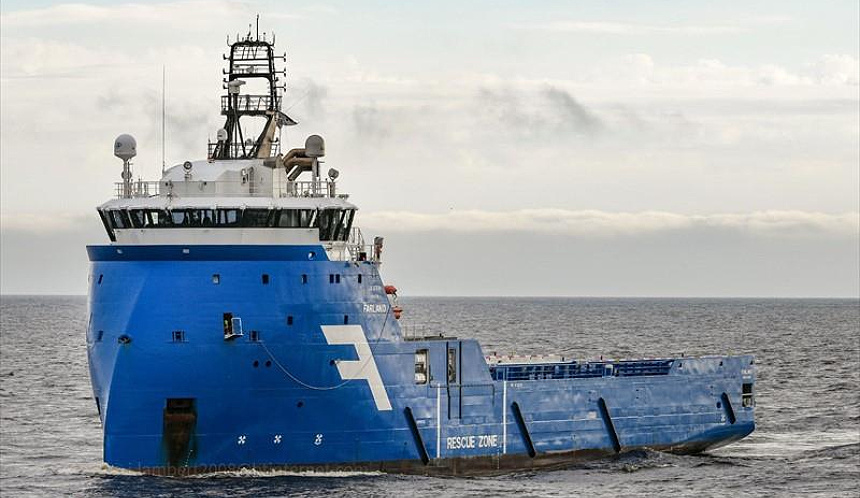
Hans Martin Gravdal, CEO of Norside, said Farland‘s accommodation capacity was for 22 people, but that after the conversion, the vessel would be able to accommodate a total of 60 persons.
“A new accommodation module will be installed, and a battery package as well as a gangway and cranes,” said Mr Gravdal.
Mr Gravdal has form in identifying industry trends and capitalising upon them to his personal advantage. He previously sold his first subsea company Geo Group to DOF for over US$100 million in 2005 (here), and then sold his second, which he founded in 2008 using the proceeds of the DOF sale, to Swire Pacific Offshore in 2012 (here). That business, renamed Swire Seabed, has subsequently been liquidated.
I think we can guess where Mr Gravdal is heading with this, too.
“When the music stops, in terms of liquidity, things will be complicated,” the former CEO of Citibank said just ahead of the onset of the Global Financial Crisis in 2008. “But as long as the music is playing, you’ve got to get up and dance. We’re still dancing.”
So, too, in Oslo for offshore wind, where fortunes are being made and the music continues to play. What’s the jive for investors this time around?
Let’s just say that Ms Imbruglia’s follow-up single to Torn was 1998’s Big Mistake, which reached number two in the UK charts.
Background Reading
If you missed the pop culture reference, or are missing the feel-good emotions of 1990s bubble gum pop, the original Natalie Imbruglia video for Torn is here and the one for Big Mistakeis here.
GE’s full corporate 2021 results presentation is here.
For more details of the problems facing Sapura Energy, Malaysia’s The Edge has this excellent coverage from mid-2021, and it nominated Sapura as one of its Turkeys of the Year in December last year (here).


